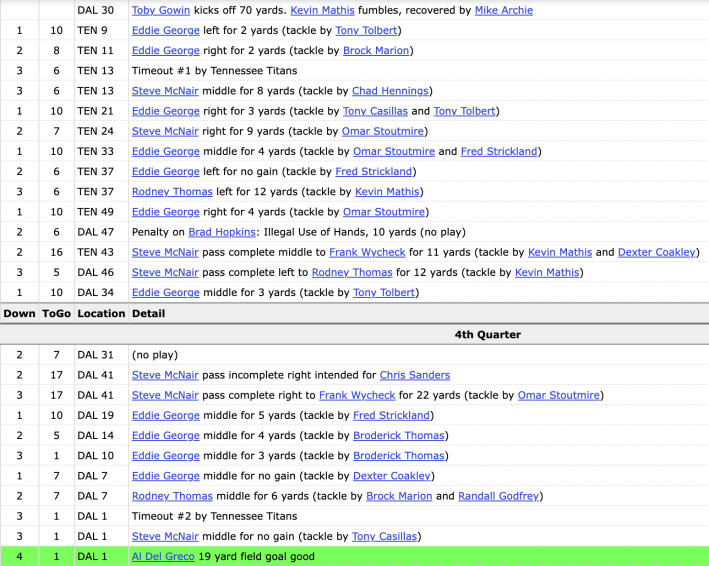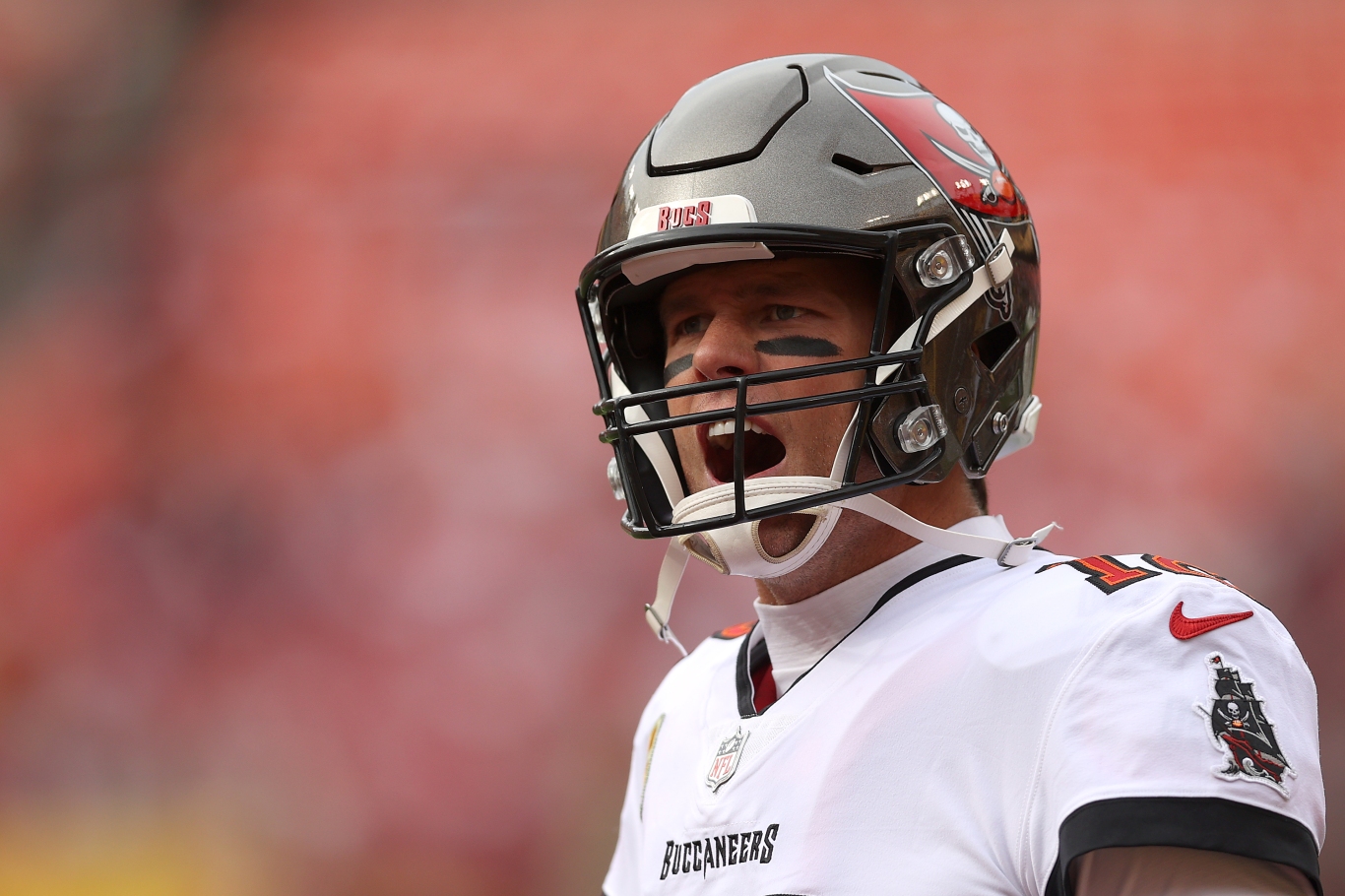Tom Brady and the defending champion Tampa Bay Buccaneers came out of their bye week with a troubling lack of juice. It was this uncharacteristic condition of juicelessness—a measly 273 total yards of offense, a couple costly turnovers, an early deficit to a last-place opponent—that left the Bucs down two scores to the Washington Football Team at the start of the fourth quarter. But a quick-strike 40-yard touchdown from Brady to Mike Evans made it a four-point game with nearly 11 minutes left on the clock. For the 20th-ranked offense and 28th-ranked defense of the Football Team—and especially against even an out-of-sorts Tom Brady— 11 minutes of NFL football is an eternity.
Far be it from me to tell an NFL team its business, but so long as the rulebook makes it impossible for Tom Brady to throw touchdown passes while the opposing offense has possession of the football, it seems perfectly clear to me that the solution is to simply keep your offense on the field at all times. Presto! This foolproof strategy scored a major triumph Sunday: Washington took possession at their own 20-yard line following Evans's score, and simply declined to share the football with Tampa Bay's offense until the game was functionally over. Taylor Heinicke and Antonio Gibson powered the Football Team to an improbable and hilarious 19-play, 80-yard drive, covering a whopping 10 minutes and 26 seconds of game clock, and ending in a game-sealing touchdown run from the one-yard line. Washington converted four of five third-and-shorts; the one they failed to convert was redeemed on the next play by Gibson's fourth-down plunge into the end zone with just 29 seconds left on the game clock, to establish the final margin.
19 PLAYS. 80 YARDS. OVER TEN MINUTES.@WashingtonNFL just iced the game with a historic TD drive. #WashingtonFootball #TBvsWAS pic.twitter.com/pgG0qi9P9V
— NFL (@NFL) November 14, 2021
An extremely annoyed Brady was left with no opportunity to orchestrate one of his signature game-winning drives, and proceeded into the remainder of his weekend in an exceedingly foul mood. If you have an opportunity to do this to Tom Brady, consider it a moral imperative:
This was not a fluke of conservative offense. Ron Rivera and the Football Team were just as petrified of giving the ball back to Brady in a one-score game as you'd expect. Terry McLaurin, whose heroic nine-yard grab on play number 15 staked the offense to its seventh first down of the drive, acknowledged after the game that burning clock in that scenario was high on the offense's list of priorities, even when taking over with nearly a full quarter of game left, because of the presence of "that guy, No. 12, over there." Heinicke, too, sensed that this drive—which again I must stress began with 10:55 left on the clock—gave Washington its best chance to "go end it right now." If the first priority was finding their way to paydirt, it was at least handcuffed snuggly to priority two: making sure that Brady and the Buccaneers' third-ranked scoring offense had as little time as possible to form a response. This is why a WFT offense that, to that point in the game, had produced just 59 yards on 21 carries ran the ball on 13 of the final drive's 19 plays.
Naturally you are now wondering two things: What is the longest drive in modern NFL history? And what is the longest possible drive in an NFL football game?
The longest drive I was able to find using my advanced researching skills (a keyword search for "longest drive in NFL history" followed by clicking several links) turned up an incredible second-half drive by the Tennessee Oilers in a 1997 game against the visiting Dallas Cowboys, which (not counting two penalties) featured 21 plays and consumed 13 minutes and 27 seconds of clock, spanning the third and fourth quarters. This is a good game to look up for a fun trip down memory lane. Troy Aikman threw three interceptions, which were returned for a combined 108 yards and a score. Eddie George ran the ball 34 times for 110 yards, with a long carry of just nine yards. Tennessee dialed up 17 total passing plays against an insane 49 rushing plays, despite averaging just 3.34 yards per carry. The available video from that game is great, if you love those old Oilers uniforms and huge, huge shoulder pads. Football was real different back then.

As for the second question, about the longest possible drive, that's somewhat trickier to answer. Envelope math tells me that a team could start up against its own goal line, convert 10 fourth downs, and finish with a 40-play touchdown drive, theoretically using up at least 26 minutes of game clock. But since this is only one scoring drive, this strategy would leave "Tom Terrific" with four minutes to orchestrate a response, in a one-score game. Unacceptable!
But there's more: In discussion with another football-knower, it was brought to my attention that there exists a theoretical model for an offense to hold the ball indefinitely, even if the results would hardly qualify as much of a drive: Imagine a team starting its drive with two sacks for a total loss of 15 yards, but on third-and-long the defense commits a facemask penalty. That's 15 yards plus an automatic first down, giving our offense zero net yards on the drive but a fresh set of downs. No mechanism exists to stop this sequence from repeating for an entire half! In fact, I'm pretty sure Jim Zorn's 2009 Washington team had its most productive offensive half of the season executing this exact gameplan. Simply throw in a touchdown at the end of this sequence—easy enough to arrange with one second left in the half, or the game—and you've got yourself a recipe for a whole lot of winning.
Frankly, that no NFL team in recorded history has even used up one entire quarter on a single drive offends me as a sports fan. As you can plainly see, teams have all the tools necessary at their disposal to deprive Tom Brady of all but a tiny handful of incredibly rare opportunities to handle a football during an NFL football game. It is only the vain, vulgar pursuit of "big plays" and "dignity" that prevents Tampa's opponents, and indeed all football teams, from executing Operation Keepaway every Sunday.





